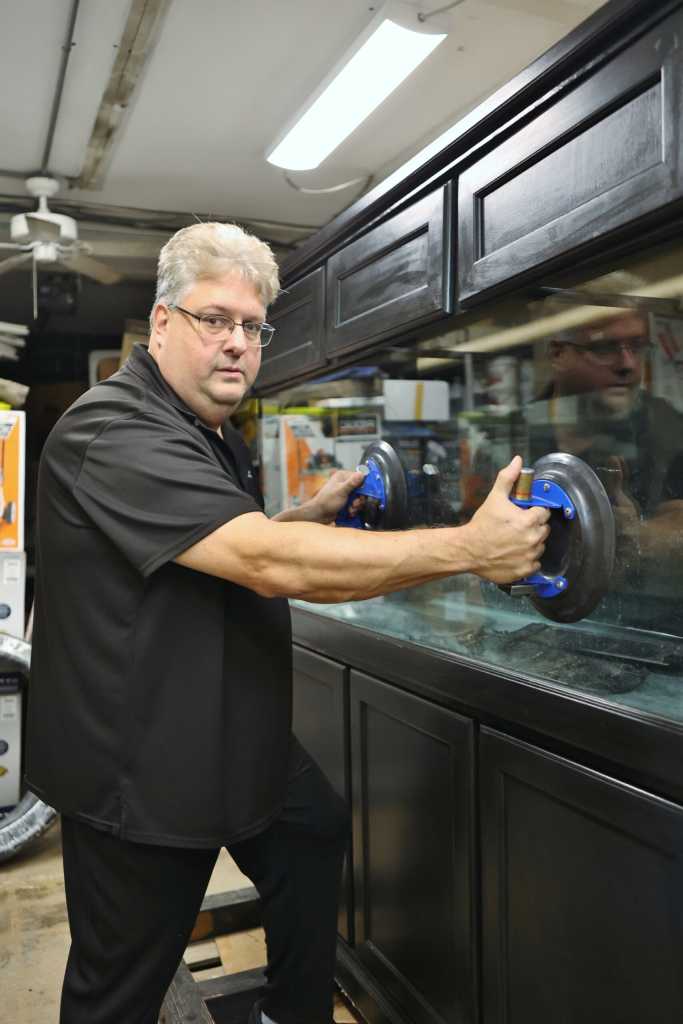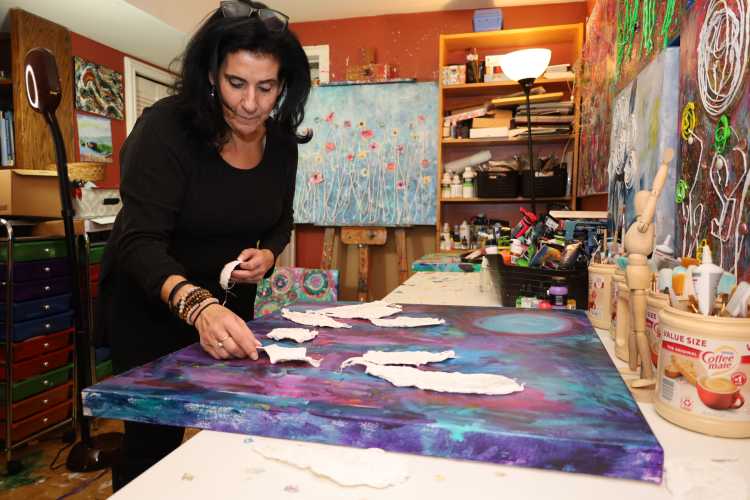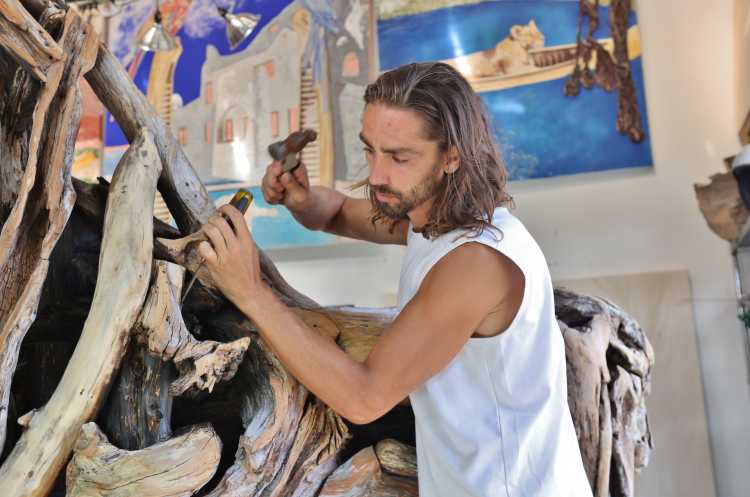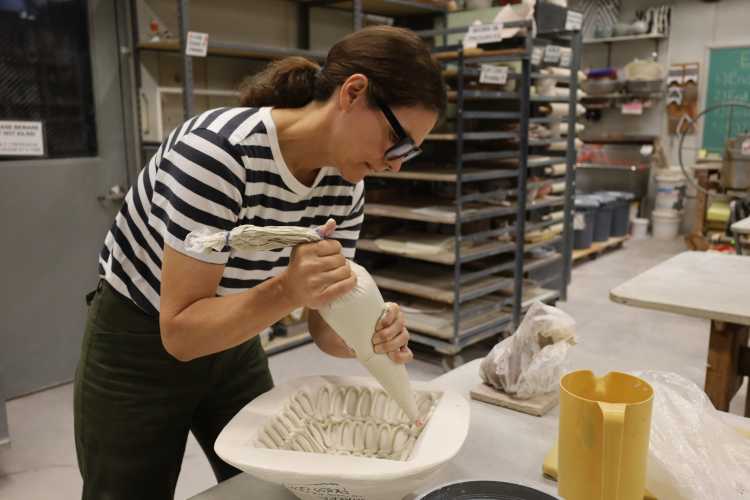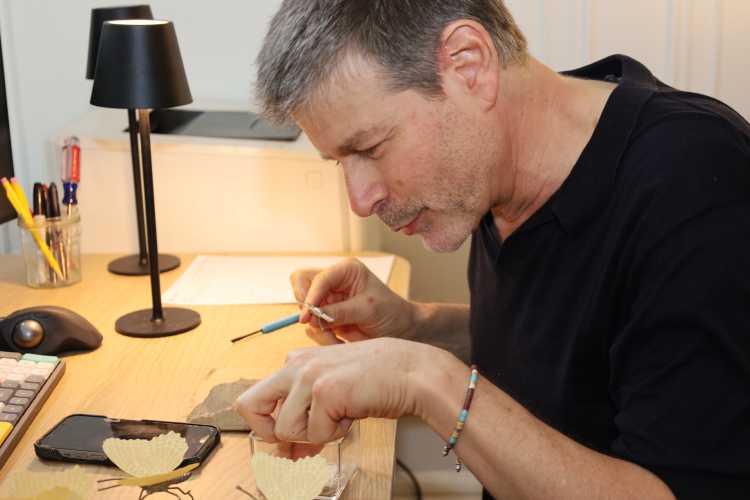When it comes to waterfront property, few can match the expertise or experience of Darian Odabasi. But it’s a different type of waterfront.
The president of Aquarium Design Network New York in Huntington Station, Odabasi is a master aquarium builder, who has done a lot of work for Tanked, a television show on Animal Planet. He has designed, stocked, installed and helped maintain high-end and aquariums from 10 gallons to 20,000 gallons.
Odabasi has designed and installed a shark aquarium for the stand-up comedian and actor Tracy Morgan, best known for Saturday Night Live and 30 Rock, and a more traditional aquarium for former New York Jets linebacker Bart Scott on Tanked.
“We installed the tanks, put the fish in and did maintenance,” Odabasi says of work for Tanked. “The first two seasons, a bunch of the shows were my customers on Long Island.”
He designed one custom aquarium for the show that looked like a piano. “Everything would be themed,” he says.
Although Tanked is in reruns, Odabasi is busier than ever. A hands-on owner, his business card says “aquatic specialist, director of service and CEO.” He builds tanks out of glass and acrylic, installs coral, designs and stocks as well as builds custom cabinetry.
“We figure out what’s going to work in that space,” Odabasi says. “I have my hands in everything.”
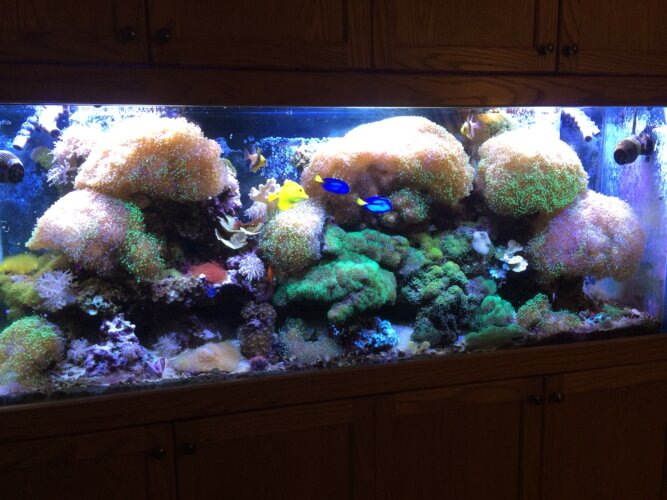
Fish Inc.
Odabasi says he “always had an aquarium” when growing up in Syosset. “It was my hobby,” he adds. “I enjoyed it. It just kept growing.”
He initially planned to pursue medicine before finding a new purpose with fish. “I went to medical school. I made a shift to my hobby,” he says. “I started importing fish and selling them to pet stores.”
He started selling fish and coral on the Internet in 1995, opening his aquarium shop nearly 20 years ago and servicing, installing and stocking custom-built aquariums.
“We’ve been so busy with installations,” the Medford resident says, noting he builds aquariums, ponds, fountains, waterfalls and water walls.
“We have clients at private homes and buildings where we do glass water walls in addition to aquariums.”

left, and Brett Raymer from the television show “Tanked”Courtesy photo
Homegrown aquariums
While Odabasi and his company used to do a lot of work in Manhattan and New Jersey, these days they have 300 accounts, primarily on Long Island.
“A lot of the aquariums on the East End are large,” he says. “We had some clients from the East End who want to take water from the Bay and use that for tanks.”
In addition to saltwater or reef and tropical water tanks, they set up brown tanks with natural bay water.
“They can see stuff from the bay,” he says. “You have it in your house.”
They even provide jellyfish tanks. “It’s difficult to keep jellyfish, but those are cool,” Odabasi says.
And they built a turtle tank for a veterinarian in the Hamptons.
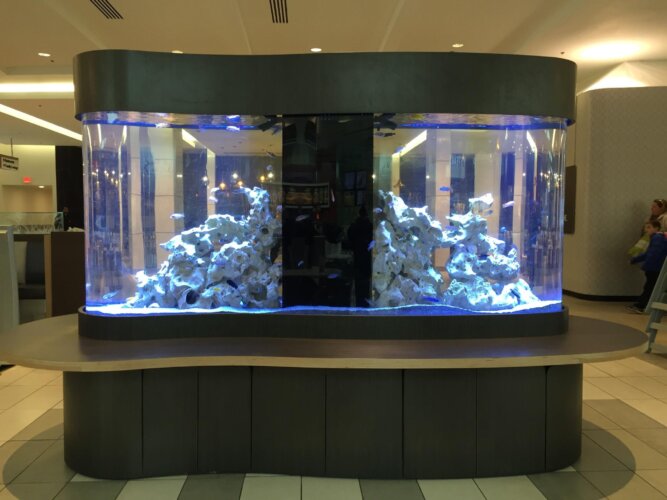
mall on Long Island.Courtesy photo
Different sizes, shapes
Although commissions typically aren’t as wild as for Tanked, Odabasi makes a dizzying array of aquariums.
He typically brings his tablet, letting customers browse through images of his work to see what they like. He builds out of glass or acrylic ranging from one to many thousands of gallons at costs from a few hundred dollars to $500,000 for aquariums as big as 40 feet long and six feet tall as well as cylinders 20 feet tall with a 10-foot circumference.
They build and install aquariums in living rooms, recreation rooms, basements and even as an actual bar.
While most aquariums are rectangles, some are square, cylinders are popular and corner tanks are catching on.
Glass is used for most, but can’t extend beyond 10 or 12 feet and 42 inches tall. Acrylic is used for larger “race track” shapes or elongated rectangles with curves, often used for sharks, as well as large cylinders, two to three stories tall
“Glass is heavier than acrylic. It can withstand more abuse from cleaning,” Odabasi says. “Acrylic tends to scratch, whereas glass doesn’t. Glass holds up better, but you’re limited to size.”
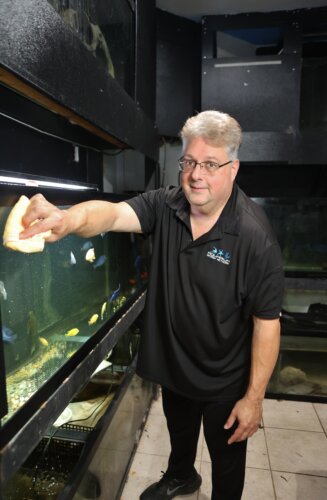
tank in their fish room.Courtesy photo
Fish furnishings
While the aquarium is the thing, the fish are the stars. The company, around for 27 years, sources fish from 38 countries. “We’re hooked up with the same fish importers as on the show Tanked,” he says.
Normally, Odabasi provides a fish or suggestion list that clients use to select. Fish are flown in, placed in quarantine and provided to clients. He says saltwater reef and regular marine or fish only without live rock (FOWLR) are common.
Fish should come from reputable sources, so they are handled and shipped properly and arrive healthy.
Freshwater fish can cost $1 up, while saltwater fish can be one inch to 18 inches, but prices vary, noting Clarion angelfish can cost $5,000. “They’re only able to be collected once a year in the Clarion islands,” he says.
Saltwater tanks often have colorful fish, such as Percula clownfish (Nemo) and blue tang (Dory).
“There are so many species and colors for salt water,” Odabasi says.
In freshwater, African cichlids can provide blue, pink and yellow touches, while tetras also are popular.

Mixing and matching
A key part of the craft of stocking aquariums is knowing which fish play well with which others.
“You know the diets of each fish and their aggressiveness,” Odabasi says. “You learn what goes together and what doesn’t.”
In a reef tank, typically with rock from the Fiji Islands or South Pacific, you typically don’t use puffers or sharks. African cichlids come from different territories including some that are very aggressive. “You have to make sure you don’t put categories that fight,” he says.
You must pick fish carefully when using coral since some fish eat coral. And Odabasi also stocks aquariums with snails, crabs and shrimp. Seahorses are nice, but don’t mix well with fish that compete with their food source. Some starfish eat coral.
“A lot of it now is manufactured,” Odabasi says of recreated reefs. “It‘s concrete and aragonite mixed.
They form fake live rock. Then they put it in the ocean to let organisms grow on it.”
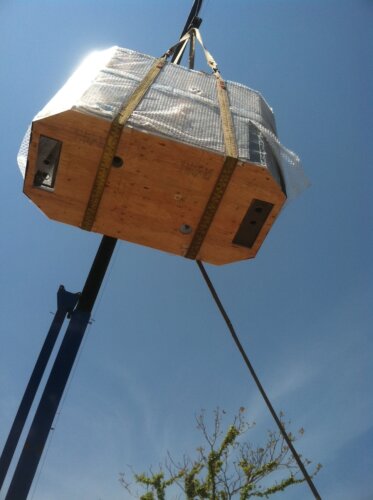
SIDEBAR:
Tech makes a splash LED lighting, high-tech filters and apps have revolutionized aquariums, allowing for special effects and cell phones to control lighting, monitoring and pumps.
“There are apps for everything,” Odabasi says. “You can program lightning storms, sunrises and sunsets on your phone.”
The older metal halide lighting used to heat the water. “Now no heat comes from the new LED lighting to make the water temperature higher,” Odabasi adds.
You, or they, can track salinity, temperature, oxygen and more on phones. “We can shut pumps on and off and automate water changes,” he says. “We put in water level sensors and pull from a storage tank.”
There are wet-dry filters, filter socks instead of filter pads, protein skimmers and other technologies. “Filtration is key,” Odabasi esays. “The whole industry is based on new technology.”
While lighting is key to an aquarium’s look, ultraviolet light sterilizers can help clean them, protecting fish from parasites and infections.
This article appeared in the January 2024 issue of Behind The Hedges Powered By the Long Island Press. Read the full digital edition.

